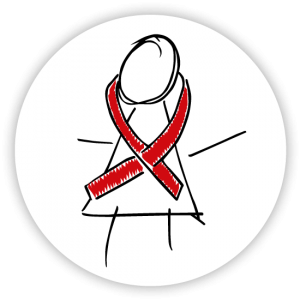Pharmacokinetics of lopinavir/ritonavir super-boosting in infants and young children co-infected with HIV and TB
1 December 2015. Related: Conference reports, Paediatric care, PK and drug interactions, TB coinfection, Paediatric Workshop 7 Vancouver 2015.
Lopinavir/ritonavir (LPV/r) dosed at 1:1 ratio in the presence of rifampicin (RIF) was not inferior to LPV/r 4:1 ratio without rifampicin in HIV positive children in an interim pharmacokinetics (PK) analysis presented at the 7th International Workshop on HIV Paediatrics.
The analysis was from a multicentre, open label sequential, non-randomised, propsective PK study conducted by Mark Cotton and colleagues from South Africa in collaboration with Drugs for Neglected Diseases Initiative (DNDi).
RIF causes drug-drug interactions by cytochrome (CYP) p450 induction and reduces LPV/r exposure by approximately 90%. Doubling LPV/r works in adults receiving concomitant RIF-containing TB treatment but does not in children. A ritonavir (RTV) super-boosting strategy to LPV/r 1:1 ratio in order to overcome the effect of RIF is recommended for children. Evidence to support this is limited and mainly from older children.
The study used two strategies: in the first children started TB treatment before starting ART and in the second ART first before TB treatment. The investigators performed PK evaluations during the periods of concomitant TB treatment and LPV/r 1.1 dosing and ART alone with LPV/r 4:1 dosing.
The primary objective was to demonstrate that the proportion of participants achieving modelled LPV/r0/morning trough >1 mg during RTV super-boosting on RIF-based anti-TB treatment is non-inferior to LPV/r 4:1 without RIF.
Children >42 weeks post-conception, weighing >3 to <15 kg at enrolment were eligible. Dosing was according to standard World Health Organisation (WHO) weight bands for ART and TB treatment using liquid LPV/r and RTV.
Six PK samples were taken over 10 hours: pre-dose then 1,2, 4, 6 and 10 hours post-dose:
- PK 1 – RIF X 4 weeks + super-boosted LPV/r (1:1) > 1 week.
- PK2 – RIF + super-boosted LPV/r (1:1) month 6 for TB treatment
- PK3 – LPV/r (4:1) 4-6 weeks post RIF + super-boosting
- PK4 – LPV/r (4:1) 3 months after TB treatment
The investigators used PK1 data to develop model, which they applied to PK2 and PK3 data.
The study sample size was calculated for 80% power to compare the predicted number of children with C0/morning trough <1mg/L between PK3 and PK2 for non-inferiority – defined as upper limit of 95% CI of the difference PK3-PK2 below 10%.
At the request of WHO – to inform the 2015 guidelines – the investigators performed an interim analysis (to May 2015 before required sample size reached).
At this time point: 256 children had been screened, 89 enrolled, 22 were on study, 59 had completed, 3 died, 3 were lost to follow up and 4 withdrew. Two thirds (66) of the children started TB treatment first, 21 ART first and two started TB treatment and ART together. The investigators had performed 217 intensive PK evaluations across groups (154 on RIF).
| Enrol | PK1 (n=80) | PK2 (n=68) | PK3 (n=56) | |
|---|---|---|---|---|
| Age (months) * | 18.2 (9.1 to 26.8) | 19.1 (10.0 to 28.8) | 22.9 (3.5 to 33.4) | 23.7 (15.2 to 33.5) |
| Age <1 year | 29 (33%) | 26 (31%) | 14 (20%) | 7 (11%) |
| Weight (kg) * | 8.4 (6.9 to 10.7) | 8.8 (7.2 to 11.1) | 9.8 (8.7 to 12.2) | 10.1 (9.1 to 12.3) |
| CD4%CD4 cells/mm3 | 19 (11.2 to 25.5)880 (459 to 1710) | |||
| Viral load (log) | 5.8 (4.7 to 6.3) |
* Median +IQR
The percentage of modelled LPV/r C0/morning trough below target: 10.7% (95% CI: 3.3-19.6) and 15.1% (95% CI: 5.1-27.7%) for the super-boosting plus RIF and standard dosing respectively. This gave a difference of 4.4% (95% CI: -12.1 to 1.4%), which met the criteria for non inferiority. There was a smaller percentage of C0/morning trough below target with super-boosting compared with standard LPV/r dosing.
At the end of the study (24-36 weeks) for which there were data available for 30 children, 24 (80%) had viral load <1000 copies/mL; 22 (73%) <400 copies/mL and only 6 (20%) <50 copies/mL. The investigators noted that there were no major PI mutations in the unsuppressed children or safety concerns at this stage.
Enrollment to this PK study continues. The study was complicated and had both logistical and tolerability obstacles associated with the liquid formulation. The investigators expect that the LPV/r pellets and granules and RTV granules might help.
Reference:
Cotton M et al. Lopinavir ritonavir (1:1 ratio) in the presence of rifampicin is not inferior to lopinavir ritonavir (4:1 ratio) in the absence of rifampicin in Human Immune Deficiency Virus (HIV) children. Interim analysis of an open label sequential non-randomised pharmacokinetics study. 7th International Workshop on HIV Pediatrics, 17-18 July, Vancouver, Canada. Oral abstract LB.
http://regist2.virology-education.com/2015/7hivped/07_Cotton.pdf


